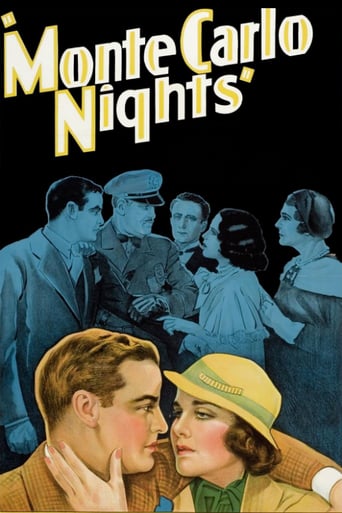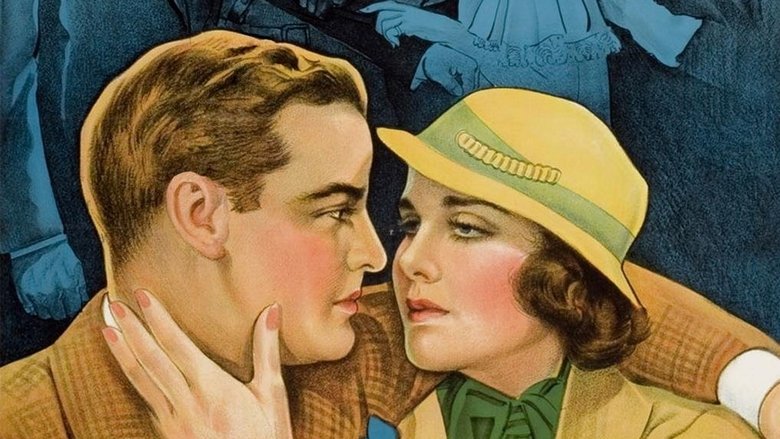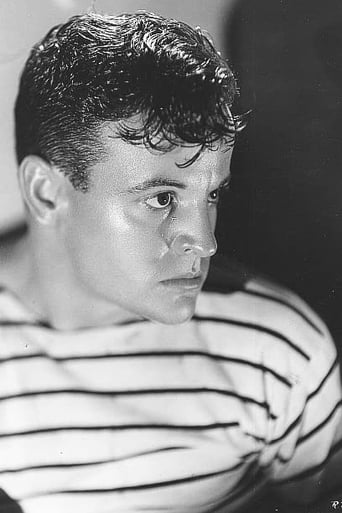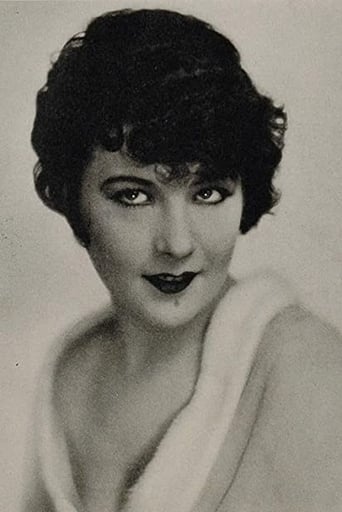

Monte Carlo Nights (1934)
A man wrongfully convicted of murder escapes custody and goes in search of the real killer. The problem is that he only has one clue to go on.
Watch Trailer
Cast


Reviews
A reviewer needs to give really old movies a lot of latitude. That is particularly true regarding visuals and sound, but also to a lesser extent the story. Hitchcock was perhaps an exception. But a lot of latitude still allows one to critique on points that any filmmaker should have been aware of, even in those days.The most significant problem here is a plot that is rushed. I can accept that 1930s Hollywood is responsible for the conspicuous absence of pauses between lines of dialogue. This is typical of films back then; it conveys the impression that the runtime is being clocked with a stopwatch.But in this film some scenes don't connect well, and I'm left with the impression that connecting scenes may have been cut out. How else are we to explain Inspector Gunby's assumption that Larry is innocent? Then there's that scene where Larry appears at the window at Mary's home; how did he get there from his escape location? How did he manage to get from Mary's home to Monte Carlo? None of these actions are explained. Were connecting scenes edited out? If yes, why? If, on the other hand, this is the way the scriptwriter wanted the plot to play, then it's a poorly written script. Either way, the film, at barely sixty minutes, appears forced into a runtime straight-jacket.Production values are acceptable for the era. B&W photography is about what one would expect, grainy, and with the use of static camera shots. Casting could have had more diverse looking females. Acting was a bit exaggerated at times, not unusual for early talkies.I suppose one could say that "Monte Carlo Nights" is a suspense film; there's a little, not much. The ending contains a slight story twist, but one that is not satisfying. The overall whodunit resolution here is disappointing. Other whodunit films from the same era are better.
Larry and Mary, young stars of high society, eye each other from their respective boxes at the race track. Mary's aunt warns her that Larry is "notorious"; Mary coolly replies that he's awfully good looking. Larry rides his own horse in the steeplechase—and is thrown off. Faking injury, he catches a ride to the hospital with his head on Mary's shoulder and the two are quickly engaged. From there the plot takes a while to develop, but eventually .Larry is (mistakenly) convicted of killing a gambling hall owner, escapes from the train on the way to prison, and somehow makes his way to .Monte Carlo! where he suspects the real killer has fled. In Monte Carlo, he befriends a young French woman who becomes devoted to him, and pursues his only clue: the killer always plays numbers 7, 14, 28 and 29 on the roulette table.John Darrow and Mary Brian do well as Larry and Mary; both develop interesting and distinctive characters that viewers can root for. To the newspapers, Mary is "Little Mary of the Vernon Millions," but she quickly establishes an independent streak that worries her protective aunt. Larry has "a reputation" but he's charming and dashing and—it turns out—tough and resourceful.George Hayes plays the other major character, a police detective named Gunby—yes, a detective in a coat and tie. He watches with narrowed eyes, asks questions and adds up details, concludes that Larry is indeed innocent and also sets out for Monte Carlo to hunt for the real killer.Astrid Allwyn is excellent as a dangerous blonde who tries to pull a fast one on Larry and Gunby. An actress named Yola d'Avril is sad but loyal as Larry's Monte Carlo assistant. There's no shortage of plot in this 62-minute adventure. And it keeps the viewer guessing—the suspense is not exactly unbearable, but it does build nicely to a well done climactic scene. Fans of Monogram's 1930s westerns will enjoy not only George Hayes but a quick glimpse of the great Yakima Canutt phoning the police—in a tuxedo!
This movie is not that bad, a decent time waster if you don't mind watching old black and white movies. I think most of the negative comments are coming from people who just don't like old black and white movies or they are expecting them all to be as good as Hitchcock, to that reviewer I say you are right it's not as good as any Hitchcock film but it is still a decent enough way to spend a couple hours.It's a mystery film noir type movie where the main character is accused of murder but escapes and strives to hunt down the real killer on his own to get revenge but also obviously to prove that he is innocent of the crime he has been accused of. The actor playing the main character gives a good performance and so does the actress in the main female role.
Well! I like this film and here's why: it is very well made, it has two excellent good looking stars in beautiful Mary Bryant and handsome John Darrow, it is MODERN as a 1934 pic can be, it is actually interesting, a lot of care is evident s the casting and costumes... and the art direction, set design and budget is clearly on show on screen. Best of all for me is that it is a 1934 Monogram Picture and this little film company started in 1931 as a very low rung indie was really getting up into big theatrical bookings and excellent box office success. This is a good small film with very strong screen cred. It comes from a small pulp fiction dime novel whodunit by schlockmeister E Phillips Oppenheim who possible ground out dozens of mystery thrillers in the 20s. Like KING KELLY OF THE USA made the same year at Monogram, it is a calling card to big chain theaters: this little film company was striving to please; and this film does in the ways described above. And at 60 minutes or so, it would have been booked everywhere and very profitable.... as I said on the KELLY comments... no wonder big bad wolf Herbert J Yates was waiting to gobble them up into Republic Pictures the next year, as he did, until Monogram wriggled free in 1937 and rattled on until 1988 (as Allied Artists). This is antique talkie fun... and very well made.




